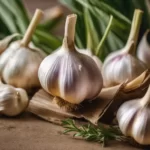In the world of interior design and botanical decor, cachepots stand as versatile and aesthetically pleasing elements. These decorative containers not only enhance the visual appeal of plants but also play a vital role in elevating the overall ambiance of a space. As we embark on this exploration of cachepots, we unveil their unique charm and functionality. Discover how these ornamental coverings, distinct from traditional plant pots, can transform the way we integrate nature into our living spaces and add a touch of style to our homes.
Cachepots vs. Plant Pots
Cachepots, often referred to as decorative planters or cover pots, differ from conventional plant pots in several ways. While traditional plant pots are designed primarily for practicality and plant growth, cachepots prioritize aesthetics and versatility. Cachepots serve as outer containers that encase the plant’s original pot, creating an attractive facade that conceals the utilitarian aspects of plant care.
Unlike traditional plant pots, cachepots may not always have drainage holes, as their primary purpose is to enhance the visual appeal of the plant and the space it occupies. This design distinction allows cachepots to be used in a broader range of interior decor applications, beyond simply housing plants.
Materials and Designs
Cachepots come in a diverse array of materials and designs, each contributing to their unique charm. These decorative containers can be crafted from materials such as ceramics, metal, wood, glass, or even woven materials like rattan or wicker. The choice of material can greatly influence the cachepot’s appearance, from sleek and modern to rustic or classic.
In addition to materials, cachepots also boast a wide range of designs, from minimalistic and contemporary to ornate and traditional. Their versatility means you can find cachepots that suit any interior style, whether you’re aiming for a bohemian, industrial, or mid-century modern look. These designs can feature intricate patterns, textured surfaces, or vibrant colors, making cachepots not just plant vessels but also distinctive decor elements.
As we explore materials and designs, we uncover the artistry and craftsmanship behind cachepots, elevating them from mere plant containers to captivating additions to interior design schemes.
Versatile Decor Elements
Cachepots, with their decorative flair and adaptability, extend their utility beyond mere plant holders. These versatile decor elements can be employed in various creative ways to enhance the visual appeal of a room. One popular application is using cachepots as stylish storage solutions. They can house an assortment of small items, from pens and stationery to keys and remote controls, maintaining a clutter-free and organized living space.
Cachepots also serve as attractive accents on tables and shelves. When empty, they can be arranged decoratively to add a touch of elegance to a room. These decorative containers can be a focal point on dining tables, providing a foundation for captivating centerpieces, or they can grace mantels, imparting a sense of sophistication to the space.
Furthermore, cachepots play a protective role, safeguarding surfaces from moisture and potential damage caused by potted plants. Their dual function in protecting furniture while enhancing the decor makes them a valuable addition to any home.
Plant Pairing and Complementary Decor
One of the delightful aspects of cachepots is the art of plant pairing and complementary decor. When choosing the right cachepot for a plant, consider the plant’s size, color, and style. The cachepot should not only accommodate the plant’s pot but also harmonize with its overall aesthetics.
For example, a lush, green plant can be beautifully contrasted by a cachepot with vibrant colors or intricate patterns, creating a visually captivating combination. On the other hand, a flowering plant might be best complemented by a more neutral cachepot that allows the plant’s blossoms to take center stage.
Cachepots also provide opportunities to match or contrast with the surrounding interior decor. They can align with the color palette of the room or introduce contrasting tones and textures to add depth and interest to the space. Coordinating cachepots with other decorative elements, such as vases, throw pillows, or wall art, creates a cohesive and polished interior design.
In essence, cachepots not only enhance the appeal of plants but also become integral elements of interior decor, offering endless possibilities for creative plant pairings and complementary design choices. Their versatility and adaptability make them valuable assets in achieving a harmonious and visually engaging living environment.
Practical Tips and Care
To make the most of cachepots in your home decor, consider the following practical tips:
- Select the Right Size: Choose a cachepot that accommodates the plant’s original pot comfortably. The cachepot should be slightly larger to allow for easy removal and maintenance.
- Ensure Proper Drainage: If your plant requires drainage, place a saucer inside the cachepot or ensure that the cachepot has drainage holes to prevent overwatering.
- Clean and Maintain: Regularly clean your cachepots to prevent the buildup of dirt and moisture. Wipe them down with a damp cloth or use mild soapy water when needed.
- Rotate and Reposition: To promote even plant growth and sunlight exposure, occasionally rotate and reposition your plant within the cachepot.
Frequently Asked Questions
Can cachepots be used outdoors?
Yes, some cachepots are suitable for outdoor use, especially those made from materials like metal or treated wood. Be sure to check the product specifications to ensure it can withstand outdoor conditions.
Do all plants require cachepots?
Cachepots are optional but can enhance the aesthetic appeal of indoor plants. They are particularly useful for plants that come in unattractive plastic pots or for adding a decorative touch to your decor.
Can cachepots be used with artificial plants?
Absolutely. Cachepots are versatile and can be used with both real and artificial plants. They add a decorative touch to artificial greenery as well.
Conclusion
Cachepots, with their fusion of beauty and practicality, have the power to transform your living spaces into visually captivating and organized havens. These ornamental containers, distinct from traditional plant pots, serve as versatile decor elements that extend their functionality beyond plant housing.
Their diverse materials and designs allow you to find cachepots that harmonize with your interior decor, while their use extends to protecting surfaces from potential damage caused by potted plants. Cachepots also enable you to engage in the art of plant pairing, creating visually stunning combinations that elevate the appeal of your living environment.
With proper care and attention to detail, cachepots become essential additions to your interior decor, enhancing the beauty of both plants and the spaces they occupy. As you explore the world of cachepots, you unlock a realm of design possibilities that add depth, elegance, and organization to your living spaces.



